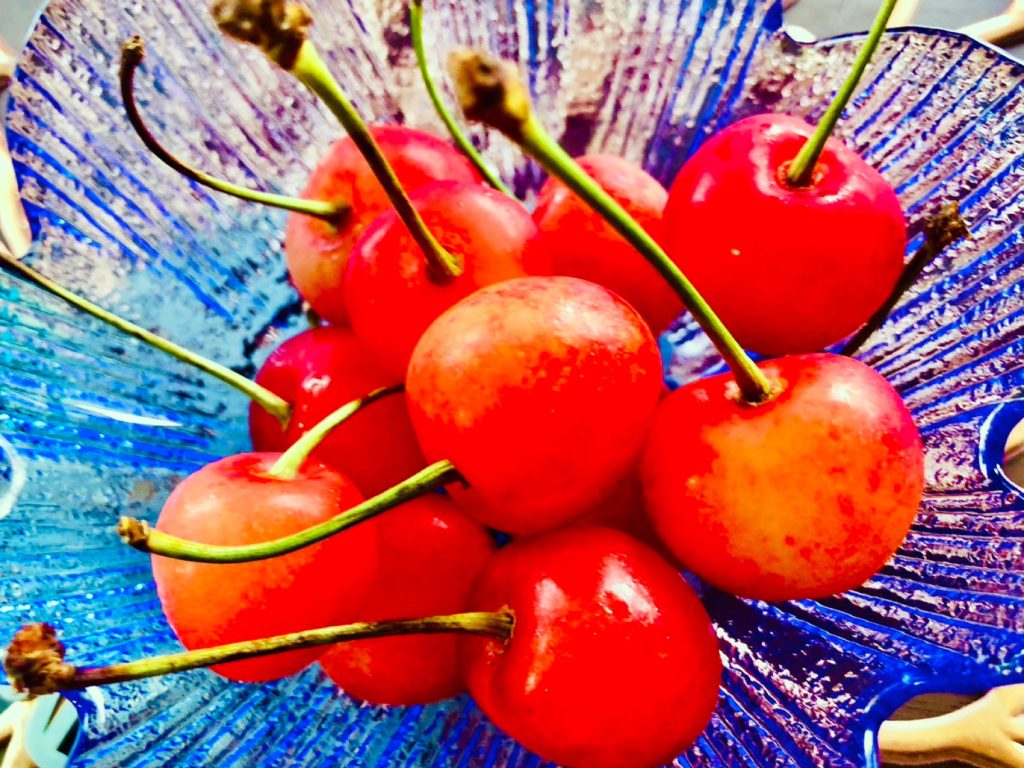
It’s cherry season again. When it comes to cherries, I only know Satonishiki, but there are several types, each with its own peak season. They produce an indescribable cuteness with their transparent redness and perfectly round, moderately sized forms. I think cherries are more for enjoying visually than for eating. Truly ‘red jewels.’ This year, something unusual is happening with cherries. According to Yamagata Prefecture, the expected cherry harvest in 2024 is 12,100 tons, which is 93% of last year and 91% of the average year. It’s expected to decrease by about 1,000 tons from last year, potentially causing price increases. Abnormal weather conditions are behind the poor harvest, with the emergence of ‘twin fruits’—cherries with two pistils—being prominent due to last summer’s intense heat. Many of these fruits are unsuitable for shipment as products. Similar problems are occurring with ume plums; fruit set is down 30% from usual years, and shipping quantities are reduced by 40-50%. On the other hand, some fruit tree farmers are cheering due to a mild winter. In Minamiboso City, Chiba Prefecture, one of the leading producers of biwa (loquat), biwa are abundant with large, sweet, high-quality fruits. Fruit trees remind us of Japan’s seasonal changes—a cultural tradition built over a long history—and concerns are growing in producing areas that have nurtured their unique food culture. If global warming continues, there’s a fear that the map of suitable regions for fruit cultivation could be redrawn in the future.
さくらんぼの季節になりました。さくらんぼといえば佐藤錦しか知りませんが、さくらんぼにも何種類かあって、それぞれ旬の時期が違うようです。透き通る様な赤さとまん丸をわい適度な大きさが、言いようのない可愛らしさを生み出している様です。食べたいと思うより、見て楽しむ果物だと思います。まさに「赤い宝石」です。そのさくらんぼに今年は異変が起きています。 山形県によると、2024年のサクランボの予想収穫量は1万2100トンで、前年比93%、平年比91%だそうで、昨年より1000トンほど落ち込むとみられ、価格が高騰する恐れもあるとのこと。不作の背景にあるのは異常気象で、昨夏の猛暑で、めしべが2本になる「双子果(ふたごか」の発生が目立ち、商品として出荷するのに適さない果実が増えたからだといいます。同様なことがウメにも起こっていて、ウメの着果は例年の3割、出荷量は4〜5割減だそうです。一方、暖冬でうれしい悲鳴をあげている果樹農家もあります。全国有数のビワ生産地である千葉県南房総市では、ビワが大豊作で果実も大きく成長し、果肉も甘い一級品だそうです。果樹は季節の変わり目を実感させてくれる日本の風物詩です。長い歴史を積み重ね、独自の食文化を育んできた生産地では、このまま温暖化が進むと将来的に適地適作地図が塗り替えられる恐れがあると懸念が広がっています。
